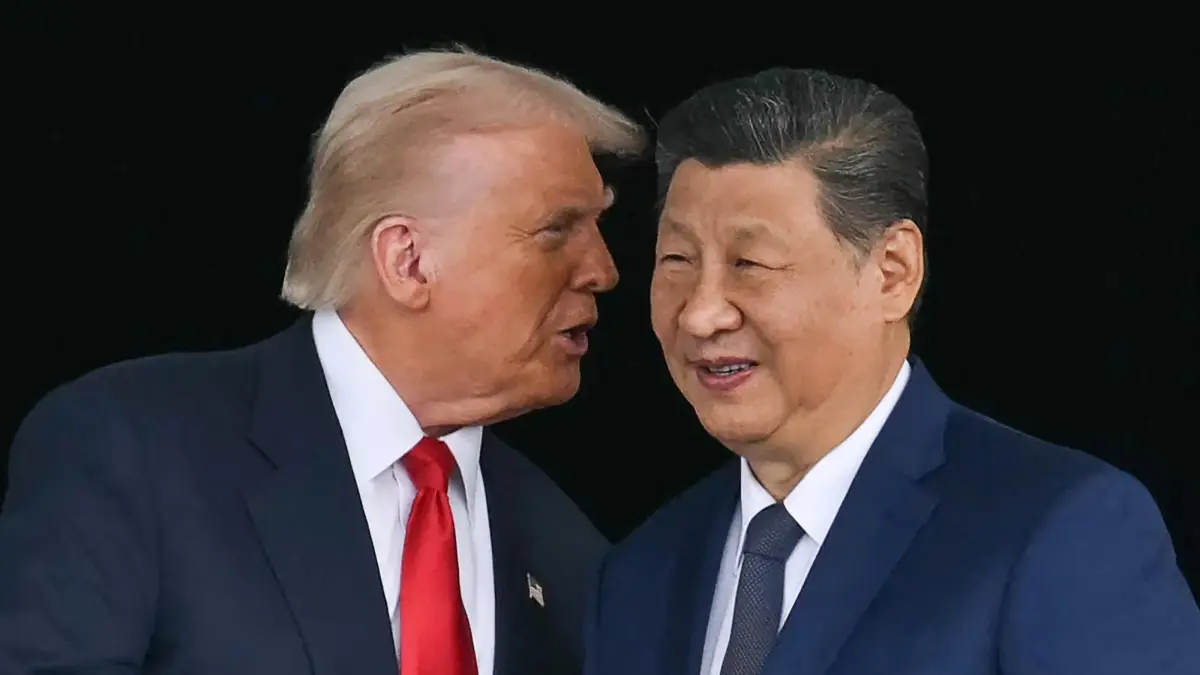The United States and China have entered a new phase of their trade standoff following the one-year truce agreed after the meeting between Presidents Donald Trump and Xi Jinping, which includes aspects such as tariff reductions, a pause in some export controls and the relaunch of agricultural trade.
These are the key points of the agreements following yesterday's meeting between the two leaders in Busan, a southern city in South Korea, and the latest round of trade negotiations in Kuala Lumpur last weekend between delegations from the two world powers.
1. Reduction and suspension of tariffs
Following the meeting, Washington reduced tariffs on Chinese imports from 57% to 47%, after lowering tariffs associated with fentanyl trafficking from 20% to 10%, as announced by Trump himself.
Furthermore, the so-called"reciprocal tariffs" of 24% on goods from China (including Hong Kong and Macau), which were scheduled to take effect on November 10 after a three-month grace period, will remain suspended for another year, according to the Chinese Ministry of Commerce. China, for its part, pledged to make"appropriate adjustments to its countermeasures" in response to these tariffs, the ministry added, without providing further details.
These measures consisted of imposing tariffs of 10 to 15% on various US products in the agri-food and energy sectors, including chicken, dairy, soybeans, corn, wheat, fish, oil, and coal.
Both countries also agreed to extend certain"tariff exceptions," the Chinese trade ministry said, without providing further details.
2. Pause in export controls and rare earth elements
US Treasury Secretary Scott Bessent said his country has decided to delay for a year the implementation of export restrictions for Chinese companies included on one of its national security"blacklists" in exchange for Beijing's decision to postpone measures on rare earth elements after the Trump-Xi summit.
On September 29, the US government announced an expansion of this list to also include subsidiaries whose majority ownership (50% of shares or more) is in Chinese hands if the parent company is already sanctioned.
China, for its part, also suspended for one year the export controls on rare earth elements and strategic materials announced on October 9, and will study possible adjustments to their implementation. Trump went further and declared the rare earth conflict"resolved" after the meeting.
3. Temporary end of mutual port charges
Both sides froze for twelve months the port fees that they had imposed on each other since October on ships and maritime services from the other country.
The suspension affects both the US measures imposed under Section 301, which investigated China's shipping and shipbuilding industry, and the equivalent retaliatory measures applied by Beijing.

4. Cooperation against fentanyl
Trump reduced tariffs on China from 20% to 10% for trafficking fentanyl, a powerful synthetic opioid, after securing Xi Jinping's commitment to strengthen controls on precursor chemicals linked to drug trafficking. Both governments described the agreement as a"consensus on anti-drug cooperation," though they did not specify how they would collaborate in this area.
5. Relaunching agricultural trade
China has resumed purchases of US soybeans, which were suspended in May, and has committed to buying 12 million tons by January and 25 million tons annually until 2028, according to statements by the US Treasury Secretary. The Chinese Ministry of Commerce confirmed the expansion of bilateral agricultural trade but did not specify figures or specific products.
6. TikTok and other business cases
The official Chinese statement indicated that Beijing will work with Washington to"properly manage issues related to TikTok," alluding to the agreement that will allow its US subsidiary to remain under majority American ownership.
Washington maintains that Beijing has given its approval to the transfer, which could be completed in the coming months.

